The 5 Most Beautiful Types of Gladiolus in the World
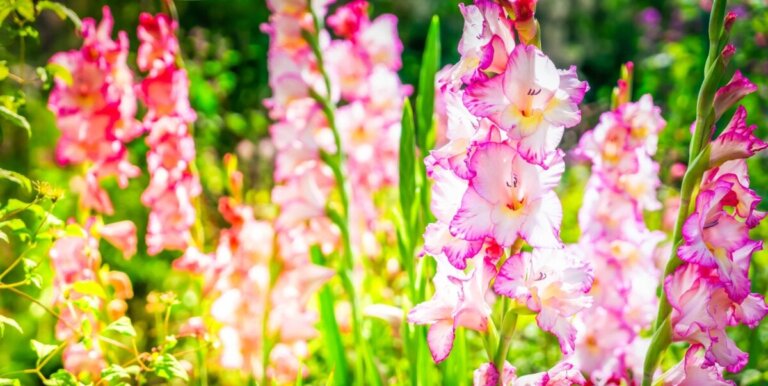
According to experts, more than 250 types of gladiolus have been identified so far, including native and hybrid species. These flowers, which are native to Europe, Asia, Africa, and South Africa, are highly sought after for the beauty of their colors. Depending on the variety, they can be very large or very small and with multiple colors.
Since many people would love to have them in their gardens, we’re going to tell you in detail what are the most popular types of gladiolus. We’ll also talk about how to take care of them so that they are always beautiful. Are you interested in learning more about these gorgeous flowers? If so, keep reading!
These are the 5 most beautiful types of gladiolus
Gladioli belong to the Gladiolus genus, of which more than 250 species have been identified, each with very specific characteristics, but diverse among them. Among the common features, we find that they have a spike inflorescence and are of annual renewal.
Regarding the flowers, it must be said that they change according to the types of gladiolus, but they have in common that they grow attached to a floral stem with between 12 and 20 flowers. Below, we’re going to tell you some more specific details of the most beautiful varieties.
We think you may be interested in reading this, too: Is It Possible to Change the Color of Flowers? Try this Method at Home
1. Gladiolus bizantinus
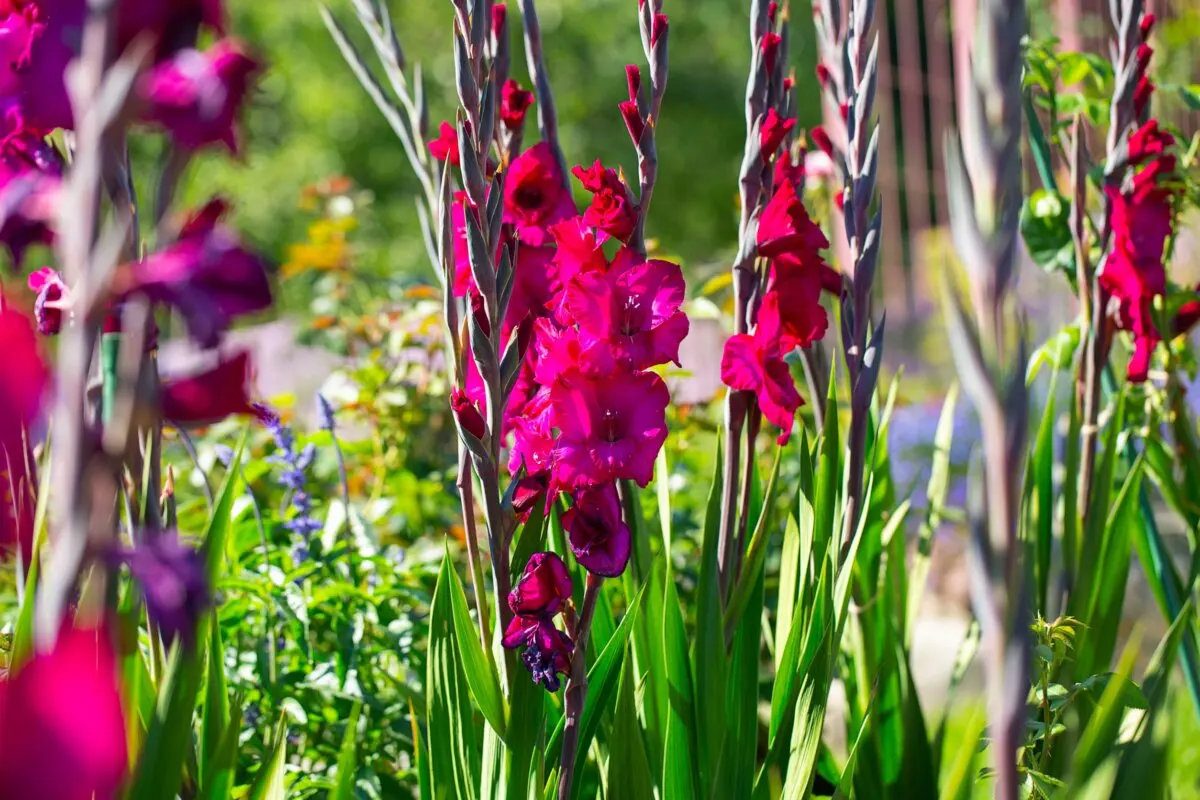
Gladiolus bizantinus is native to the Mediterranean region and is distinguished because it can reach about 75 centimeters in height. Its flowers appear in early summer. Its common name is Byzantine gladiolus and it can withstand extreme temperatures since it’s quite resistant. These are its most characteristic details:
- Vibrant color: one of the most striking characteristics of the Byzantine gladiolus is its intense color. Its flowers have a dark, vibrant magenta or purple hue, often described as a royal purple color.
- Flower shape: they’re funnel-shaped with three upper petals arching upward and three lower petals extending downward. This gives it a distinctive appearance similar to a butterfly or funnel.
- Foliage: Byzantine gladiolus leaves are narrow and lanceolate, dark green. The foliage grows in a fan shape and can form an attractive base for showy flowers.
2. Gladiolus imbricatus
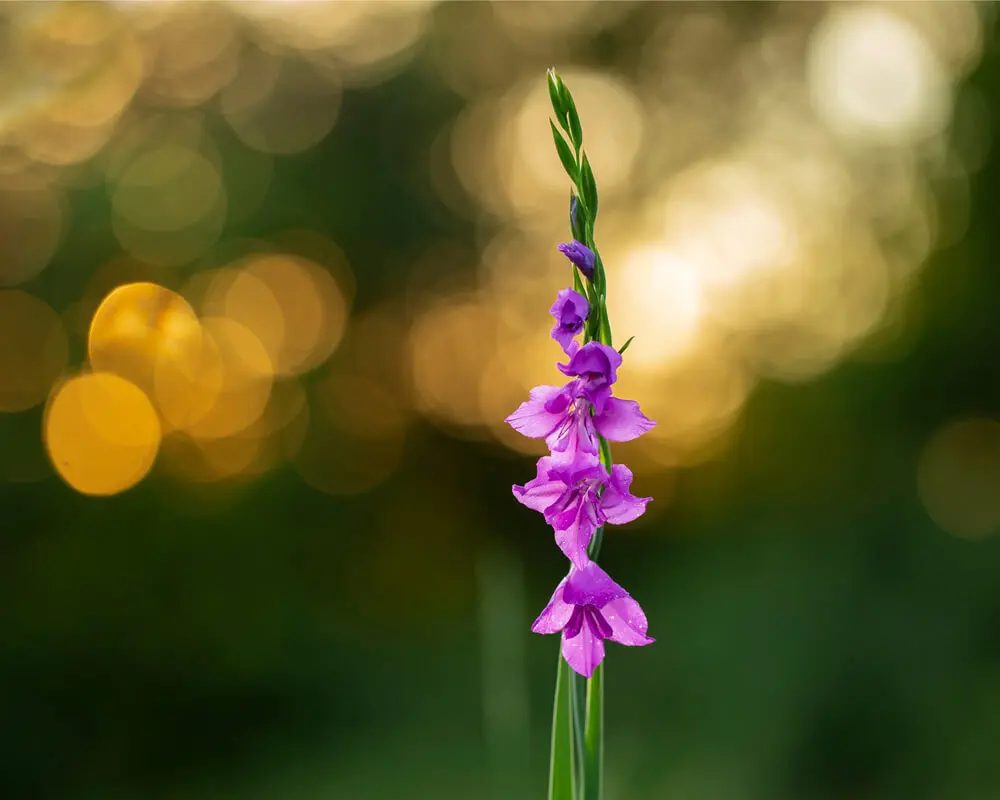
Gladiolus imbricatus, also known as imbricate gladiolus, is a species of gladiolus found in Europe and Asia. It’s one of the gladiolus types with the most showy flowers and here we tell you more specific details about why it’s one of the most beautiful.
- Growth habit: being a herbaceous plant, it can reach a height of about 60 to 100 centimeters. It has an upright growth habit and the leaves are lanceolate and narrow.
- Flowers: they are medium-sized and are grouped in an elongated and dense spike. Each spike may bear multiple flowers that open in sequence, from bottom to top. They can vary in color from shades of pale pink to deep purple.
- Shape: the flowers have a characteristic funnel shape and resemble gladiolus spikes in general. The petals are arranged in an imbricate fashion, meaning they overlap like roof tiles, hence the name.
- Flowering: usually blooms in spring or early summer, depending on location and climate. The flowers are ephemeral and may last only a few weeks.
3. Gladiolus colvillii, or ‘The Bride’
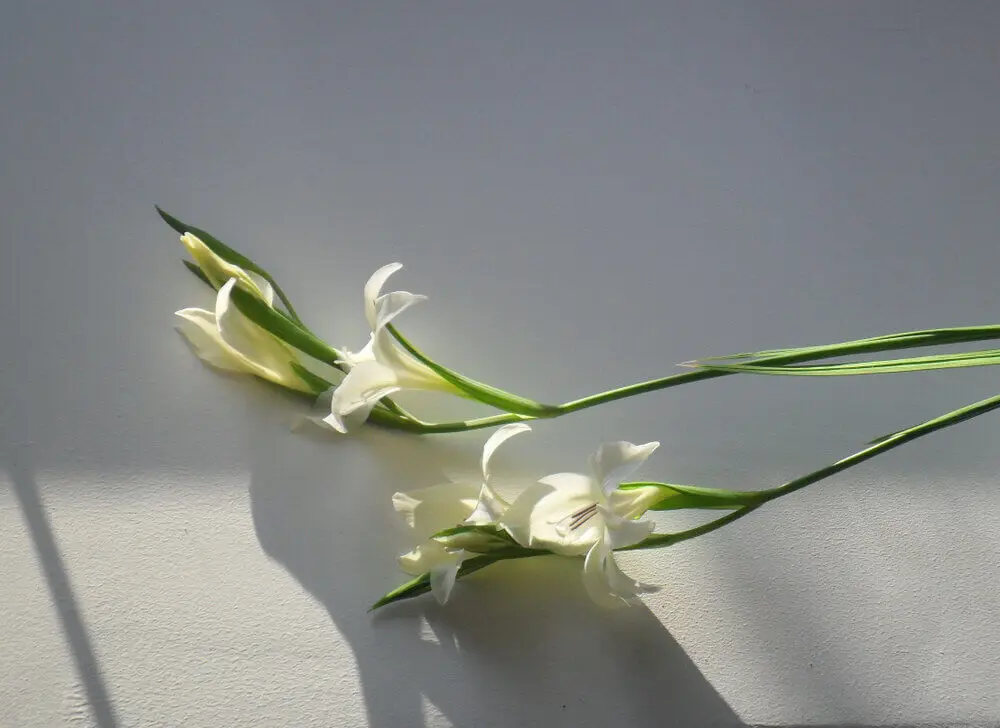
Gladiolus colvillii, ‘or The Bride,’ is a particular and charming variety known for its white, elegant, and delicate flowers. Its elegance and compact size make it a popular choice for adding a touch of freshness and romance to gardens. Here are some characteristic details about this variety:
- Flowers: the flowers are the most distinctive feature of ‘The Bride’. They’re small and feature pure white, soft petals. The flower shape resembles a snowflake or a bell and often has green or pale yellow markings on the throat of the flower.
- Size: Compared to other types of gladiolus, ‘The Bride’ tends to be more compact in size, reaching heights of approximately 30 to 50 centimeters.
- Bloom period: usually occurs in mid to late spring, making it a lovely choice for brightening up gardens in the early season.
4. Gladiolus papilio
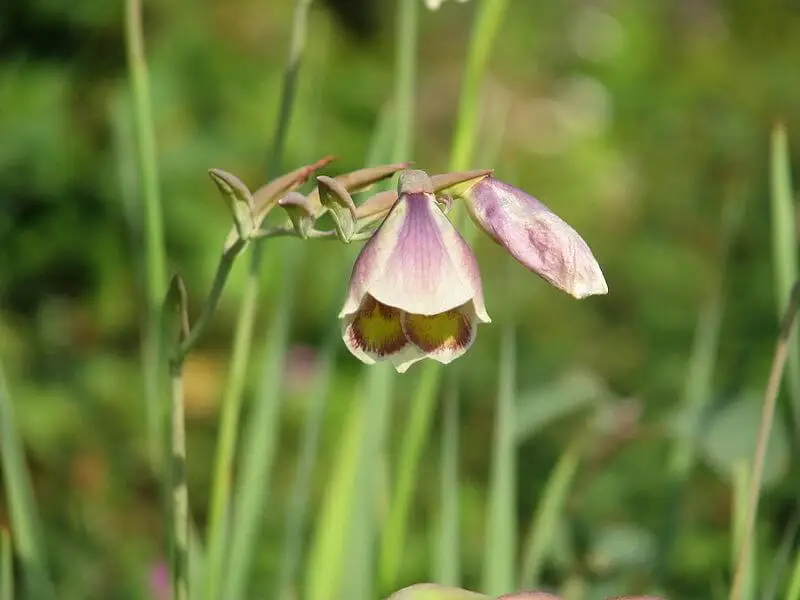
Gladiolus papilio, also known as butterfly gladiolus or papilio, is a unique and striking species. Its unusual, butterfly-shaped flowers bring a distinctive and exciting touch to any garden. Here’s how else to distinguish this beautiful variety.
- Flowers: they are unmistakable because of their peculiar butterfly shape. The top three petals are broad and extended, while the bottom three petals are smaller and curved upward, creating the appearance of open wings.
- Color: the flowers of this species vary in color, but are typically shades of red, orange, yellow, or pink, often with a darker pattern or markings on the petals.
- Size: they are small, compared to other varieties of gladiolus. However, their unusual shape and color patterns make them very striking.
- Flowering period: this plant blooms in the summer, usually in the middle of the season. Individual flowers may last several days, and the flower spike may bear several of these at different stages of opening.
Like this article? You may also like to read: A Care Guide for Vinca to Fill Your Garden with Flowers this Spring
5. Gladiolus tristis
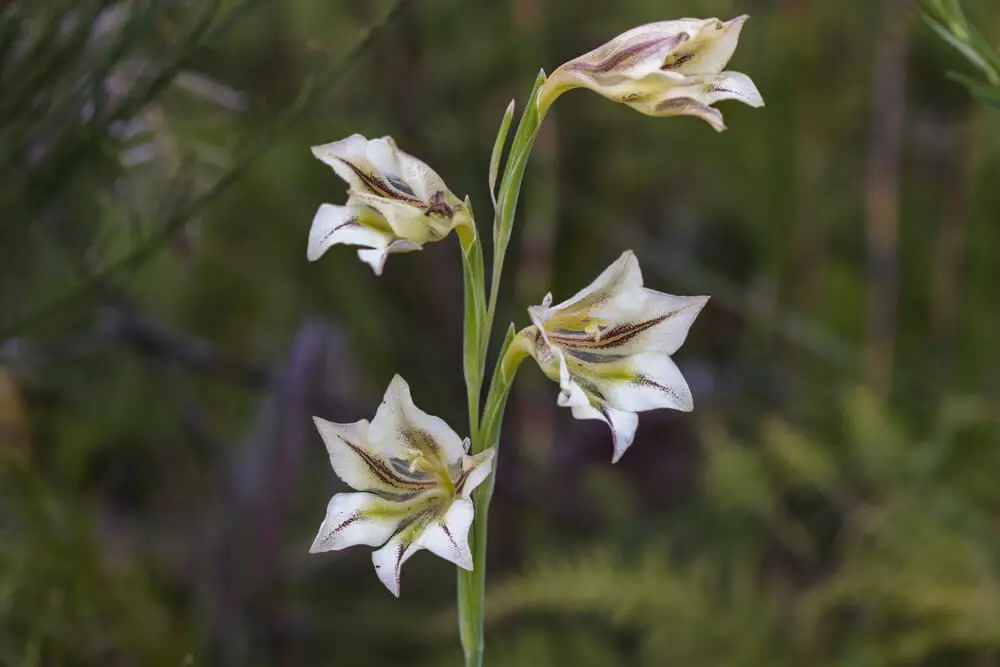
Gladiolus tristis, also known as night jonquil or night lily, is a unique and remarkable species due to its fragrant flowers and nocturnal appearance. The plant’s nickname “tristis” comes from the Latin meaning “sad” or “gloomy”. This may refer to the dark, nocturnal appearance of the flower.
Below, you will learn to identify why it’s so particular and different from other types of gladiolus.
- Flowers: they’re quite small compared to some other varieties of gladiolus, but their appeal lies in their fragrance and color pattern. They are pale yellow in color and have a soft, delicate pattern of purple markings on the throat of the flower.
- Fragrance: one of the most distinctive characteristics is their sweet, heady fragrance. This scent is strongest at night, earning it the nickname “gladiolus of the night”.
- Growth: this type of gladiolus has an upright growth habit and reaches heights ranging from 60 to 90 centimeters.
- Flowering period: it blooms in summer, in the season of mid to late July and September. Its flowers are short-lived, but their fragrance and nighttime appearance make them memorable.
Take care of all your gladiolus types to keep them looking beautiful!
Of course, you can have all these beautiful gladiolus types in your garden. As long as you take care of them in the right way, you will get the most out of their intoxicating and lovely flowers. Here are some of the recommendations you should follow:
- It’s essential to make sure they’re planted in well-drained soil and in a sunny location.
- The bulbs should be planted at a depth of between 10 to 15 centimeters and spaced about 10 to 15 centimeters apart.
- Regular watering is essential, during the active growing season, but excess moisture should be avoided to prevent the rotting of the bulbs.
- As they grow, it may be necessary to provide support, as their tall flower spikes can become heavy.
- Once the flowers fade, it’s important to remove the wilted parts to encourage the formation of new bulbs.
- After the growing season, it’s a good idea to dig up the bulbs, store them in a cool, dry place, and replant them the following spring season.
.In summary, gladiolus are very easy to care for, no matter what types we are talking about. Follow the given recommendations and enjoy their lush beauty!
All cited sources were thoroughly reviewed by our team to ensure their quality, reliability, currency, and validity. The bibliography of this article was considered reliable and of academic or scientific accuracy.
- Verdeguer, A. (1981) Hojas divulgadoras. Variedades de gladiolo para flor cortada. Ministerio de Agricultura de España. https://www.mapa.gob.es/ministerio/pags/biblioteca/hojas/hd_1981_05-06.pdf
This text is provided for informational purposes only and does not replace consultation with a professional. If in doubt, consult your specialist.








